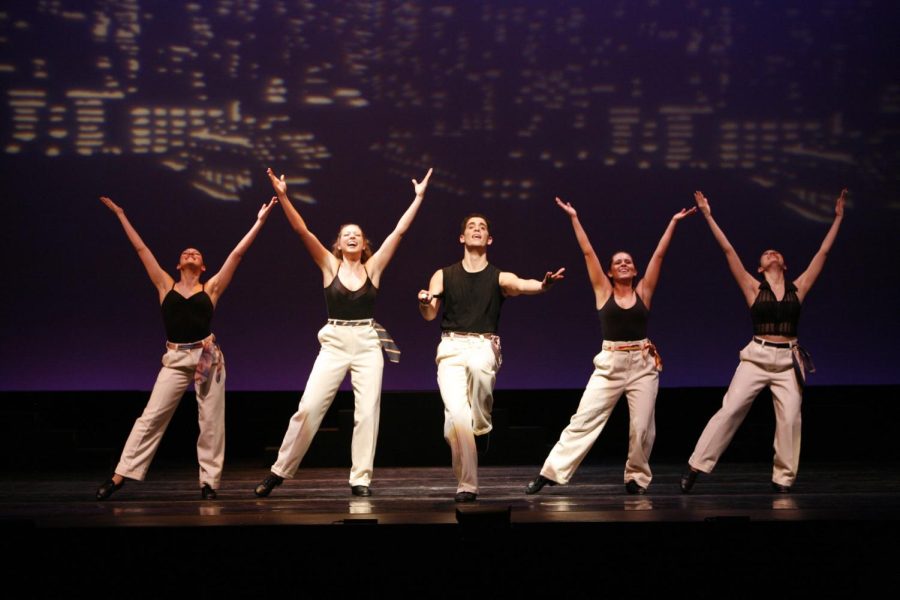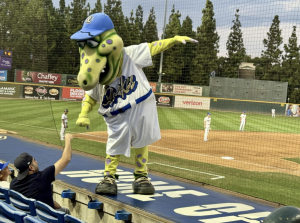Dance, The Forgotten Sport
Dance is often a forgot sport by many, but it deserves as much recognition as other sports as well.
February 11, 2022
When you hear the word sports, you may typically think of activities like baseball, football, soccer, or swimming. Unfortunately, many students often forget about one of the most challenging sports around, dance. According to Dictionary.com, a sport is “an athletic activity requiring skill or physical prowess and often of a competitive nature.” This defines the very nature of competitive dance. Many view the sport incorrectly, identifying it as an art, removing it from the ranks of baseball and soccer.
The amount of time and dedication it takes to be a dancer parallels any traditional sport. Dancers train for several hours each day to prepare for competitions and performances. Their bodies are pushed to the extreme of what teen bones and muscles can endure, requiring a tremendous amount of strength and flexibility. Performances require physicality that doesn’t appear to be natural. Stretching the muscles to their breaking point is the only way a dancer can get the job done. And that breaking point isn’t limited to the body; dancers have to have mental flexibility as well.
“If your head isn’t in the right mindset, you could psych yourself out. You have to be more positive and get your head out of the negatives,” said Tracy T.
A dancer’s mind must quickly adapt to unexpected challenges, whether it be an unanticipated injury or a choreographer who modifies a routine five minutes before stage time. All of this is demanding on the competitive dancer, who is often a notorious perfectionist.
“You have to be able to always go in [the studio] with a positive attitude. You always have to look on the bright side because even if you aren’t doing as good as you want to, you still have to push through it. You can’t always look like the person next to you,” said Kaitlyn M.
Additionally, dance can be dangerous. Most dancers strive to be the best that they can be which is required to be recognized as elite. From practicing an endless number of hours to stretching their bodies into pretzels, dancers must be aware of their limitations. A recent study by Wolverhampton University revealed that dance is more dangerous than rugby. The same study showed that 80% of dancers incur at least one injury a year which interferes with their ability to perform. Like many youth sports, the wrong move can quickly alter a young athletic career and could bring a lifetime of aches and pains.
“My biggest injury was breaking my toe because it put me out of dance for three months and I couldn’t do any tricks when I got back, so it was really hard to recover. The other day I couldn’t go on [top] of my toes. I was so scared that I was going to break it again. But unfortunately, it did happen and I broke my toe in three places,” said Tracy T.
Competitive dance also requires a significant amount of bravery. Upon taking the stage, the dancer is only allotted one chance to prove themselves. With other sports, an athlete returns to the field, court, or ice repeatedly throughout the game. For example, baseball players get three strikes before they are out. In contrast, dancers have one opportunity to perform the perfect routine. A costume could malfunction, a prop could break, or a soundtrack could act up. The pitfalls are endless and dancers rarely have control over them.
“At a [recent] competition we just got our new head pieces and nobody knew how to fully put them in their hair. As I was dancing around, it was the last turning part, and my piece flew off and hit someone in the head. I felt really bad for the other kid. Good thing I was in the very back corner because you could see it fall off. I kept going because it was the last part,” said Sydney C.
Dance is not only an art form but also a physically and mentally challenging sport. Just because something appears graceful and elegant does not make it easy. Part of a dancer’s job is to make the performance appear effortless. Perhaps that’s why detractors argue with its definition as a sport, due to hours of intense preparation that make the performance look too easy. The famous dance brand Capezio once advertised that, “Dancers work in silence and let the success speak for itself.”
“You have to be able to learn a two to three minute dance. You only have a couple hour practices to learn the number while keeping it clean, doing the dance full out, and thinking about all the corrections you have received. Your brain is doing so many things at once. It’s more challenging now because as we’ve gotten older the dances have become more intricate. I didn’t feel like I knew what I was doing up until last year. At that point my brain was able to handle everything happening at one time 10 years later,” said Isabella W.
It affects the way I view myself, I can relate to other dancers. Like I said, you have to have an open mindset and accept the fact that everyone is different and you can’t always look like the person next to you,” said Kaitlyn M.






